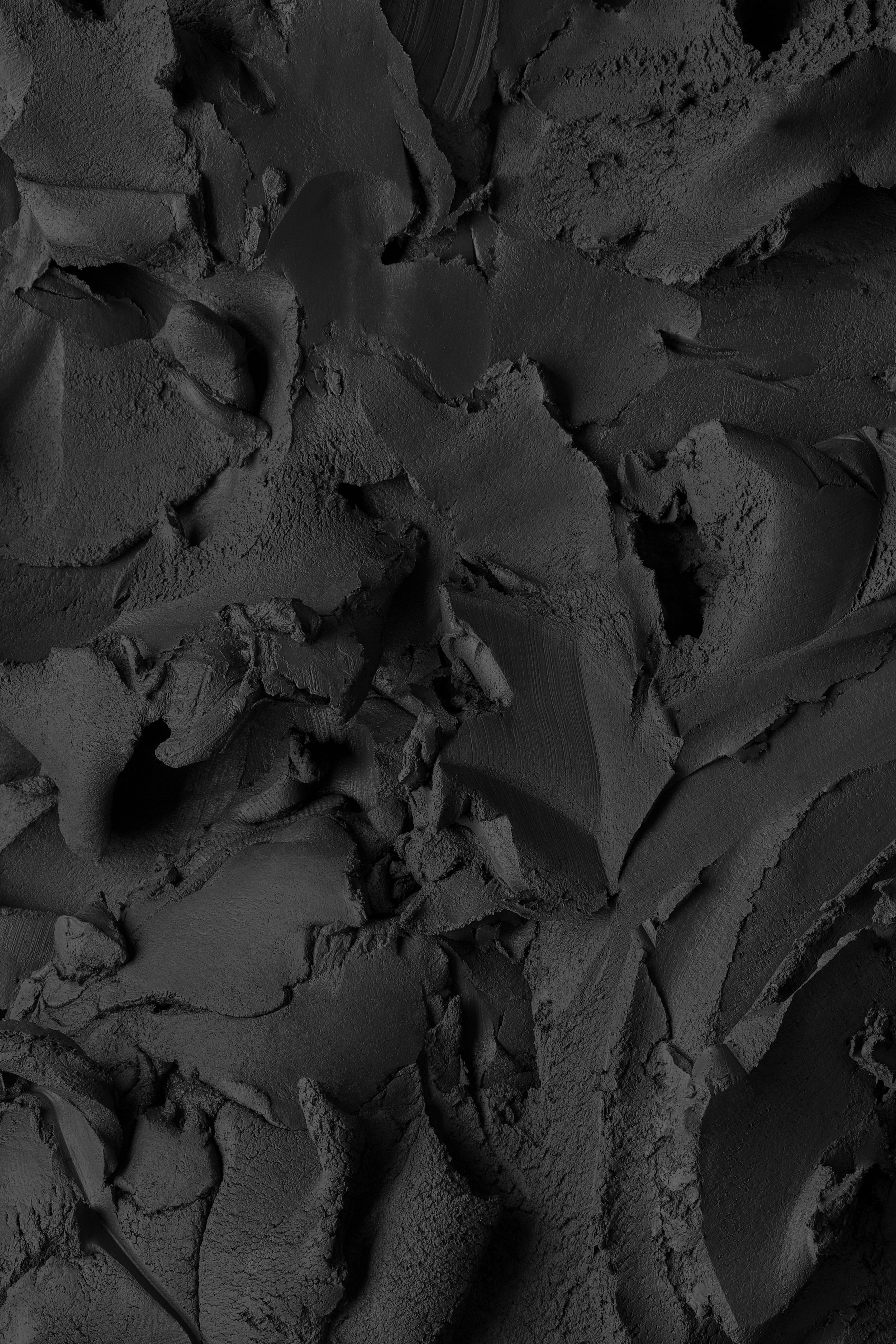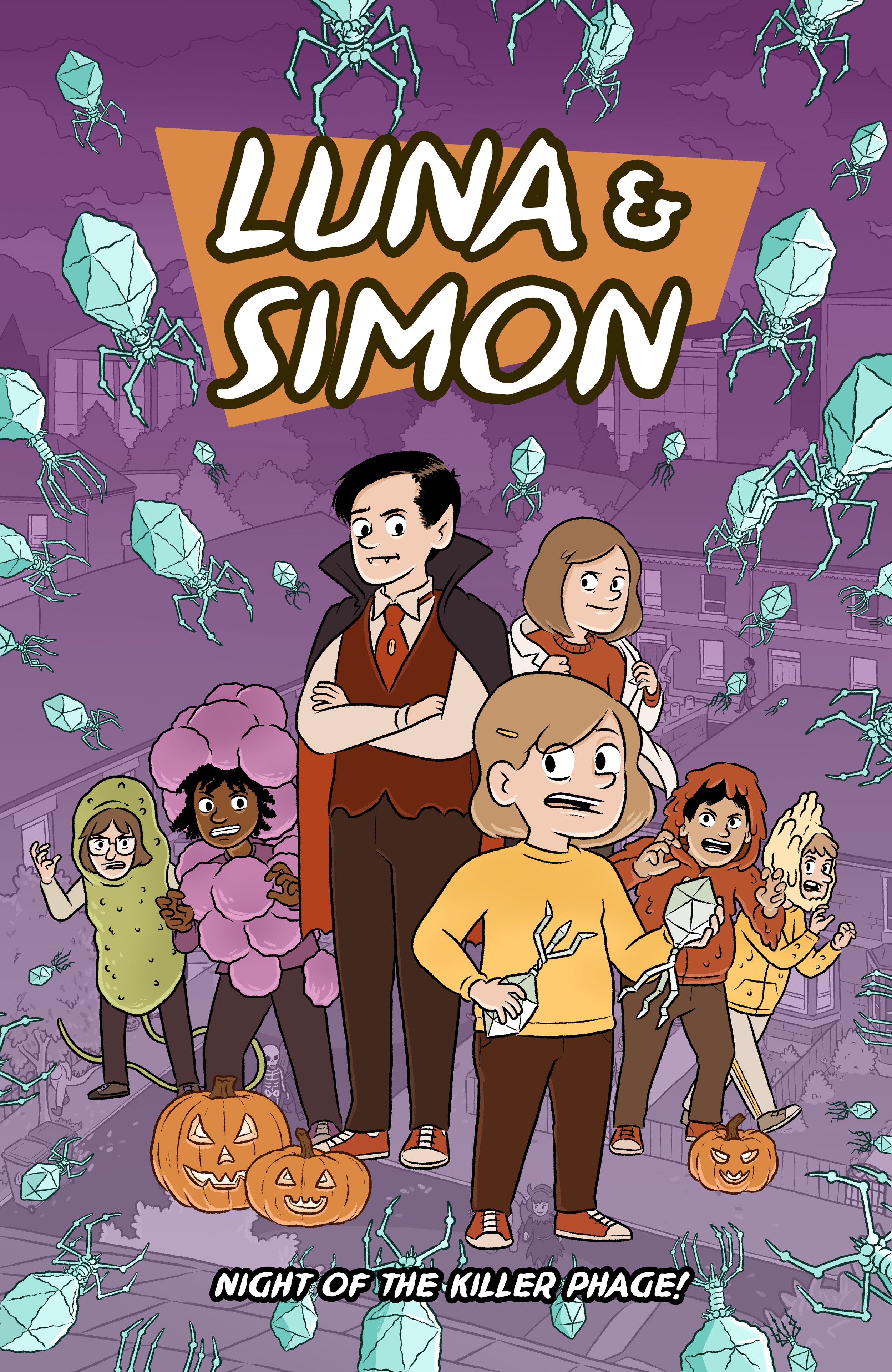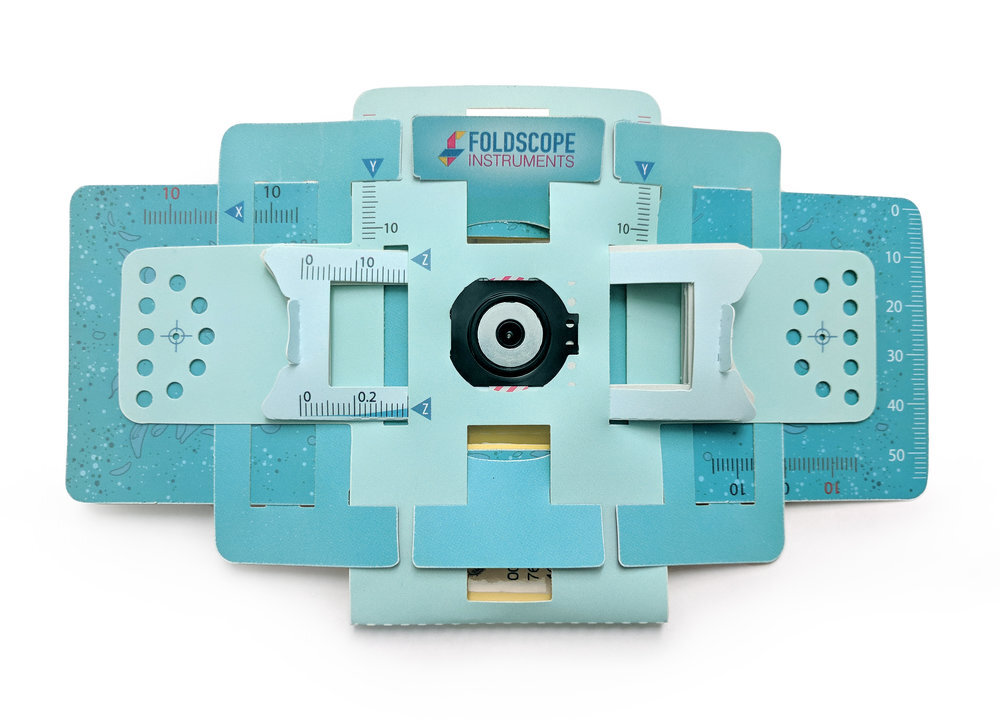
Discover the hidden world of microbes
Join Luna and her sulky brother Simon as they discover the weird and wonderful lives of microbes. Read about the diversity of bacterial life, and the strange ways in which microbes continue to evolve and change our world.
LUNA & SIMON: BIZARRE BACTERIA AND PECULIAR PLASMIDS
Luna and Simon get more than they bargained for when Luna’s imagination unleashes a swarm of Luna-sized bacteria into their home!
LUNA & SIMON: NIGHT OF THE KILLER PHAGE!
It’s Hallowe’en night and Luna and her sulky brother Simon are out trick or treating.
But when their sweetie-swiping trick gets out of hand, they turn to the fascinating power of Phages to save the day.
Enjoyed the comic? Download our activity pack here.

Luna and Simon’s Amazing Adventure Is Based on Real Science.
Microbes can be found almost everywhere we look. In universities across the UK, scientists are working to uncover the secrets of the microbial world.
Evolution.
Microbes can evolve very quickly when given the chance, because they reproduce quickly and form big populations. This can happen in the lab, giving scientists an opportunity to study evolution in a way that can be controlled, manipulated, and repeated. One study, which has been going on since 1988, has involved more than 75,000 generations of E. coli — which would correspond to over 1.5 million years of human evolution!
Rob Jackson and Mike Brockhurst, two of the scientists who helped write this comic, worked on a project that showed how Pseudomonas bacteria could re-evolve a flagellum, enabling those mutants to find more resources.
In the image, the panels on the right show the bacteria that had re-evolved the flagellum. This happened within a week. You can see their tails under the microscope (bottom), which helped the bacteria spread across the agar plate (top).
Read more about the project at their blog here, or see the scientific paper here.
The slimy bacteria in the comic were horrible enough, but the problem we are facing now is that bacteria are evolving resistance to the medicines we use to treat infections. When we use lots of antibiotics, bacteria that are resistant to the antibiotics can take over, and infections with these resistant bacteria can be very difficult to treat. This is why we should take antibiotics only when we really need them, and as instructed by doctors. Some people are also worried that using lots of antibiotics in farm animals might boost the evolution of antibiotic resistance in humans. Researchers are trying to invent new antibiotics, but it is likely bacteria will evolve to become resistant to them too if we are not careful.
This is just one reason why it is so important to understand evolution.
Microbes.
Microbes really have been found way up in the stratosphere and in the bottom of the ocean in hydrothermal vents, where they form the first crucial step in a food web that sustains some of the weirdest animals in the darkness — without any photosynthesis.
We live in a microbial world.
For hundreds of years, scientists have used microscopes to peer into the world of microbes. Now they have a new, powerful tool: DNA sequencing. By extracting and sequencing DNA from a sample, we can work out what microbes are present, and what they might be doing. The Earth Microbiome Project is an effort to sample and catalogue Earth's microbial diversity, and since it began in 2010, researchers around the world have profiled the microbes from tens of thousands of samples.
Anyone in the UK can get involved in sampling new microbes, by applying to the ‘Swab and Send’ programme.
Plasmids.
Genome sequencing has revolutionised microbiology. Perhaps the most surprising finding is that microbes often evolve by swapping genes. One way this happens is when a bacterium gains a plasmid. Plasmids are bits of DNA — little packets of genetic information — that infect bacteria.
Plasmids are diverse, they are found in many different kinds of microbe, and they provide formidable abilities: to clean up waste, resist treatments, cause infections, eat new foods, colonise new environments, and more!
But plasmids aren’t always good for bacteria. Sometimes the abilities transmitted by plasmids aren’t any benefit, like resistance to a chemical that the bacteria are already be resistant to, or might never encounter. Sometimes plasmids don’t carry any benefits at all. And carrying a plasmid can cause disruptions to the way the bacteria normally work.
We are trying to understand this ‘problem with plasmids’, because it holds clues to how plasmids — and the abilities they carry — can spread.
These photographs of bacterial colonies show the burden of carrying a plasmid. Both colonies are formed by identical bacteria, but the one on the right has a plasmid, which means it grows more slowly. However, it also has resistance to mercury. You can read more about this study here.

Find out more about evolution and microbiology
By Betsey Dexter Dyer, this guide reveals the microbial world that surrounds us “whether you're walking on the beach, visiting a zoo or aquarium, buying groceries, looking for fossils, drinking beer, traipsing through a swamp, or cleaning scum from beneath a dripping outdoor faucet”.
By Ed Yong, this popular science book dives deep into the microscopic world, revealing the close partnerships between animals and microbes. Read more of Ed Yong’s science writing here.
Written by Scott Chimileski and Roberto Kolter, this beautiful book shows diverse microbes in their natural habitats. See more amazing microbial photographs at Scott’s website.
You don’t need a complicated, expensive microscope to come face-to-face with the microbes around you. Foldscopes are cheap, robust, and help people around the world.
Activities, information, and more — including a guide to making your own Winogradsky column to learn about microbial communities at home.
This experiment by Michael Baym and colleagues shows intuitively how quickly bacteria can adapt to new challenges. Read more in this article by Ed Yong.
If you’ve enjoyed our comic and want to read more by the same creators, check out these amazing science comics!
Discover the science behind some of the world’s deadliest parasitic diseases from Malaria to Toxoplasmosis. These comics were made for Wellcome Centre for Integrative Parasitology. Read them here.
We created two comics about stem cell science - Hope Beyond Hype, written by Ken MacLeod and Scottish Stem Cell Stories, written by Barbara Melville.
Edward Ross worked on this comic with the University of Birmingham and the International Ocean Discovery Program to explore how tiny fossils burried at the bottom of the ocean give us clues to the planet’s history. Download here.


















